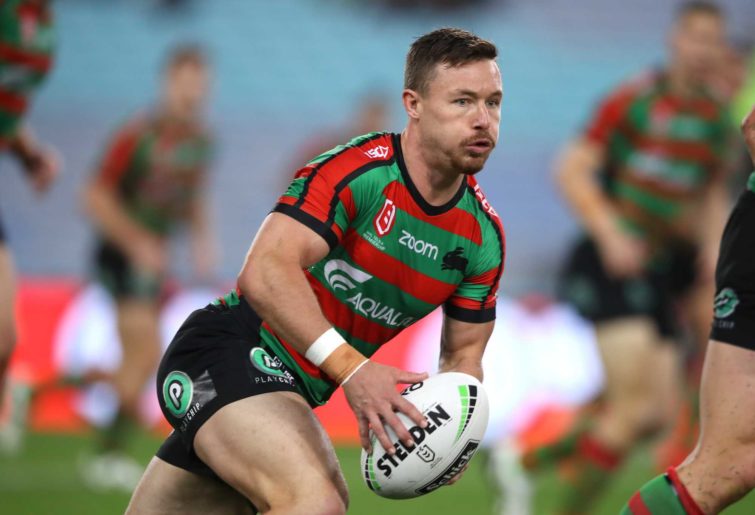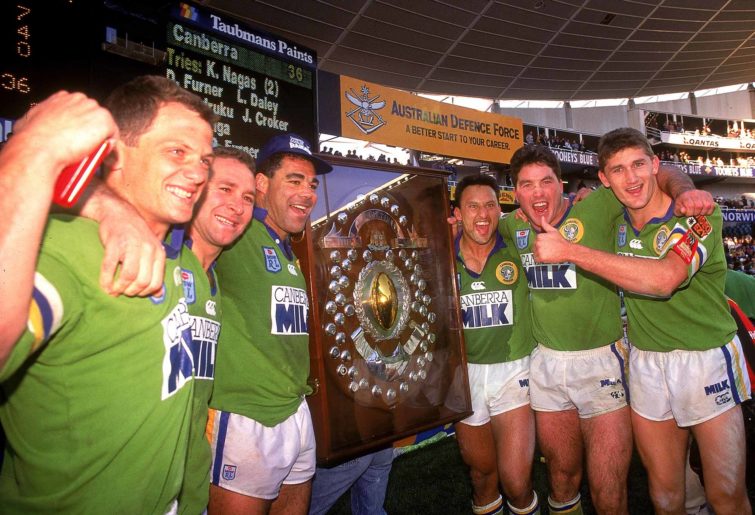NRL Round 7 judiciary: Roosters star duo charged, Eels forward in strife again
James Tedesco will be free for the next game of the Sydney Roosters' inconsistent NRL campaign after escaping suspension for tripping Ryan Papenhuyzen. The…
Opinion
On the weekend, Wayne Bennett and Trent Robinson were discussing some of the issues that arose from their respective games.
They both said pretty much the same thing: high tackles and gang tackling came into vogue as a means of shutting down the ball carrier but, more importantly, slowing down the play-the-ball.
Assuming the NRL is fair dinkum about eradicating high shots from the game, the current tough approach to tackles above the shoulders will become part of the game, rather than an exception. This means coaches will likely have to make changes to their defence.
Over the past few days, I’ve been trying to work out the implications for defences and the most obvious one for me is the return of the cover defender.
Teams will still try and complete gang tackles and early in each half – for the first 15 or 20 minutes – this type of defence will still be the most effective.
Bear in mind though, the refs are going to be red hot on players not clearing the ruck. What’s been lost a bit from last weekend’s games is the number of players sin binned with little or no notice for loitering in the ruck.
So players will still try and gang tackle, albeit below the shoulders, but will have to clear the ruck quickly or risk a stint in the bin, or worse.
This will likely result in faster play-the-balls, which favour players like Damien Cook, who are tremendously quick out of dummy half.

(Photo by Mark Kolbe/Getty Images)
He’s already a serious threat to break the line, but will become more so if the ruck becomes less congested or the play the ball becomes faster.
As each half wears on, it will become harder for defenders to either gang tackle or get back into the defensive line thanks to fatigue. We’re seeing this more and more this season already, but what we’re also likely to see are more offloads from tackled players.
Ball carriers are still allowed to hold the ball up high on their chest and the odds are now stacked in their favour. Defenders have to be extremely careful about how they attempt to latch onto the ball-carrying arm, which should make it far easier for passes to be made.
If these two factors are combined, this should mean more breaks around the ruck and/or more space for dummy halves to run and either make breaks themselves or offload to another attacking player.
Coaches will have two decisions to make about their defence. Try and stop the pass (which means running all sorts of risks previously mentioned) or trying to stop the ball carrier, but having that second line of defence ready if a break is made around the ruck. That means bringing back the cover defender.
In years gone by, I vividly remember four terrific cover defenders; Billy Smith, Johnny Raper, Peter Sterling and Brad Clyde.
All would drift back behind the defensive line at times through a game and almost inevitably seemed to be in the right place to snuff out line breaks from close to the ruck. Raper and Clyde were also pretty good at making the classic cover defender’s tackle on wingers and centres.

Brad Clyde (second from right) with his Raiders teammates. (Photo by Getty Images)
Of course, this role could be taken on by the fullback, but that presents its own challenges in terms of positional play. The fullback would need to know when to stay up, when to drop back and in an era when 40-20 kicks are rewarded with set restarts, this could create more problems than it solves.
An issue for clubs would be finding the right player to fill this role, if that’s the way they chose to go. Nathan Cleary, for example, would be a very good cover defender. He’s fast enough and strong enough to bring down most players and he has a good tackling technique. Cameron Munster would be another, or Cam Murray at Souths.
This is all conjecture, of course. I’ve got no idea whether the NRL will continue as it should in stamping out high tackles, nor do I know how coaches will manage their defences into the future.
What’s clear to me is that the NRL pendulum has swung heavily towards the attacking team, making defences harder and harder to manage. Cover defenders were a key element of defensive patterns in the past and there’s no reason why they can’t make a comeback.